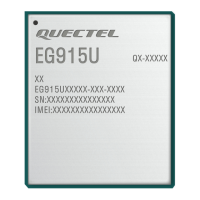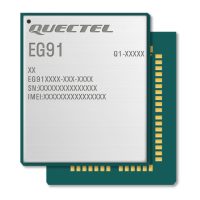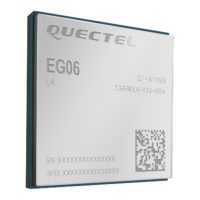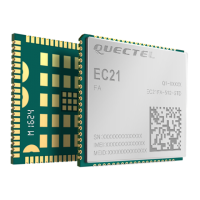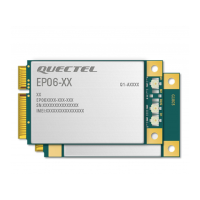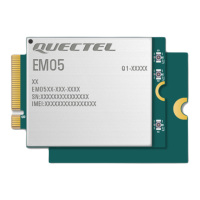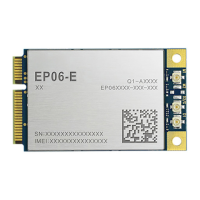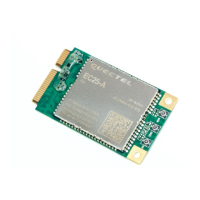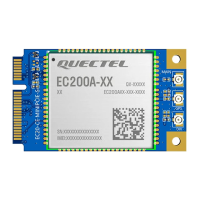LTE Standard Module Series
EG915U-EU_Hardware_Design 45 / 81
⚫ To avoid cross-talk between USIM_DATA and USIM_CLK, keep them away from each other and
shield them with surrounded ground.
⚫ In order to offer good ESD protection, it is recommended to add a TVS diode array whose parasitic
capacitance should not be more than 15 pF. The 0 Ω resistors should be added in series between the
module and the (U)SIM card to facilitate debugging. The 33 pF capacitors are used for filtering
interference of EGSM900. Please note that the (U)SIM peripheral circuit should be close to the
(U)SIM card connector.
⚫ The pull-up resistor on USIM_DATA can improve anti-jamming capability of the (U)SIM card. If the
(U)SIM card traces are too long, or the interference source is relatively close, it is recommended to
add a pull-up resistor near the (U)SIM card connector.
USIM2 is under development, not recommended for the time being. For details, please contact the
technical support of remote communication.
4.5. I2C and PCM Interfaces
EG915U-EU provides one I2C interface and one Pulse Code Modulation (PCM) interface.
The PCM interface of EG91U-EU series only supports slave mode, not master mode. Therefore, an
external clock must to be provided to the codec.
The following table shows the pin definition I2C of and PCM interfaces which can be applied on audio.
Table 15: Pin Definition of I2C Interface
I2C serial clock (for external
codec)
External pull-up resistor is required.
1.8 V only. If unused, keep it open. If
the I2C interface is used to connect to
external codec, it cannot connect to
other external devices.
I2C serial data (for external
codec)

